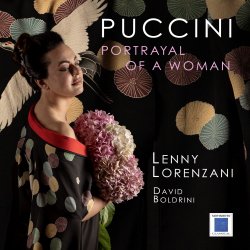
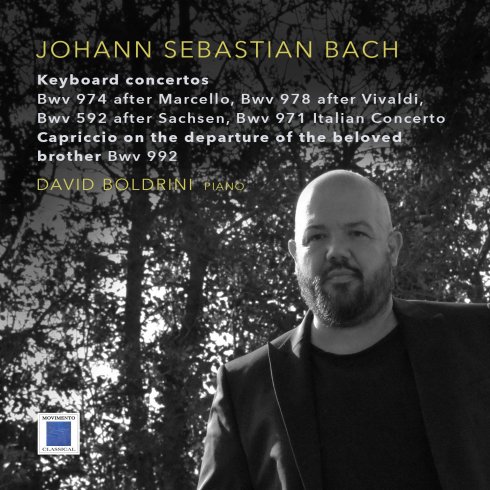
Johann Sebastian Bach
Capriccio about the distance of his beloved brother
Published in 1839 by Cari Czerny, the Capriccio Bwv 992 is an early work by J.S. Bach, written in the years 1703, 1704.
lt is believed that it maybe connected to an event in the composer's family life - most likely, the piece was written in conjunction with the departure of his brother Joahann Jacob, who enlisted in the army of King Charles the Xli as an oboist. lt is an improvisational composition, as the Capriccio form historically foresees.
During the awakening of the improvisational forms from the ltalian school, which find its greatest exponent in G.Frascobaldi, the Capriccio Bachiano is divided into severa! parts, contrasting in style and compositional character. The rhapsodic style of the Capriccio is marked by descriptive titles of the various parts; however this is the only case in Bach.
The piece begins with an Arioso, Adagio: "lst eine Schmeichelung der Freunde, um densenben von seiner Reise abzuhalten", the aria in the form of contrapuntal dialogue between the various voices seems to represent a request from the friends towards his brother to convince him not to leave.
Following the Arioso there is "lst eine Vostrellung unterschiedlicher Casuum, dieihm in der Fremde konnten vorfallen" - this partis a fugato rich in "Stretti': based on a theme enriched by trills and descending chromatisms, with an impervious "andamento". lt represents a perspective of the events that the brother might encounter in a foreign country.
Thethird episode Adagiosissimo "lste ein allgemeines Lamento der Freunde': is a generai lament from friends, built up over an ostinato bass which, as in every Lament, is repeated with the variations of the above melody; it is a page of an intimate painful lyricism, based on the "affects" that the descending chromatism characterizes in an absolute way. lt is clearly a tribute to the great compositions on bass ostinato such as passacagli, ciaccone and lamentations by Monteverdi, Rinuccini, Pachelbel, Kerll.
"Allhier kommen der Freunde (wie sie doch sehen, dass es anders nicht sein kann) und nehmen Abschied" is a brief transition episode in which it seems that friends and loved ones resign to seeing the brother change his mind and say goodbye to him.
These four episodes described with meticulous attention arefollowed by an exploratory and serene Aria di Postiglione, that seems to announce both the journey and also a return, through the fanfare's sounds and some distant echoing sounds.
The return is announced by the ringing of repeated notes, which constitutes the joyful and victorious theme of the fugue that closes the capriccio, in this last part - all the contrapuntai wisdom that Bach will develop in the production of the years to come, is already present in all its strength and completeness. In this section, in addition to a complex contrapuntal dialogue, Bach also resorts to an almost touch-like writing thus increasing the tension in the listener, who at tends to a finale that pays homage to the improvisational tradition par excellence, according to which the Contrapuntal Research and the acrobatic lnstrumental Virtuosity merge and contami nate each other.
ltalian concert
The "Concerto Italiano Bwv 971" was written by J.S. Bach in 1735.
Although traditionally the Concerto form indicates an instrumental assembly: "Tutti" that dialogues with a "solo" represented by a soloist, in the aforementioned concert Bach obtains the effect of the conversation between the two parts through episodes that develop on various sound levels and in different sections of the keyboard.
From the transcriptions of the Vivaldian concerts and of other ltalian authors, Bach had correctly understood the need fora cantabile melodie line entrusted to the soloist's episodes that would be distinguishable from a fabric made of rhythmic and contrapuntal rigor entrusted to "Tutti".
The First Movement begins, in this regard, with a "Tutti" in a vigorous binary progression. The suggestive progressions - which are not written exactly in ltalian style, but are instead contaminateci by the author's Nordic taste,- lead to the fìrst episode of the "solo" which with the cantabile entrusted to the right hand stands out in favor of the listener as it is accompanied by a simple course of eighths repeated in the centrai octave (an accompaniment that in the orchestra is usually entrusted to violas and second violins). The succession of alternation between the solo and the "Tutti" makes an progressive armonica! that moves away from the initial tonality to take piace. Each and every episode is marked by the return of the assembly that comments with juxta posed dowels in a Vivaldian style, every stage of the melodie and harmonic journey that the soloist makes, between one station and the other, through complicateci virtuosity and impervi ous solutions, even polyphonic ones, which are intertwined between the basso continuo and the voices entered between the two hands.
In part, the structure of the classical concert is almost defined, although there are not two exact opposing themes but. Nevertheless, there is thematic exposure materiai, a development path and a return of the theme path. Theannouncement of the orchestrai refrain coinciding with the icipit gloriously closes the fìrst half.The second movement, "Andante" consists of a melody ac companied by a rhythmically homogeneous bass in octaves. The bass seems to be formed by a dialogue between the violas and the second violins, which proceed by parallel thirds and sometimes by apposite motion, and the statie nature of the cells and double basses that counter the notes of the fundamental degrees of the root tonality. The melody is composed of very long phrases; there is the sensation of an infinite song - arabesques and continuous "Affetti" punctuate the progress of a song that ends each time in the exact point where a new narrative idea begins. The "Andante" is bipartite, according to the respect of the form and in the second part of it, Bach, offers a shining example of how an accompanied melody must and can infinitely flourish. The third movement, "Presto", presents an improvisational character. The "Tutti" and"Soli" are clearly distinguished by the expected amount of sound deriving from the more or less meager use of the voices. Unlike the first movement, the third movement implies a close and imitative di alogue between the basso continuo and the solo line making the listening more intriguing and sometimes dramatic. The touchy and virtuosie character of the finale seems to want to close the Concerto in glory, justifying and underlining the grandiose and heroic architecture of all this ex traordinary composition.
Concerts adapted to the keyboard at the Weimar court
Johann Ernest Prinz von Sachsen Weimar was a student at the University of Utrecht in the Netherlands, between 1711 and 1713. At that time he was able to goto Amsterdam and Dusseldorf with the aimof refining his studies as an excellent musician and composer. In the Nieuwe Kerk in Amsterdam, Prince Ernest listened to the performances of the organist Jacob de Graaf, a great connoisseur and lover of the ltalian repertoire - his performances of the ltalian orchestrai concerts, that he adapted to the organ alternating with the useof keyboards the effects of the Concerto Grosso and the Concertino, were really famous and obtained great appreciation. Prince Ernest and the organist Jacob de Graaf made acquaintance, and the prince (who was a great admirer of the ltalian repertoire of the time) carne into contact with various scores by Vivaldi, Marcello, Torelli, Albinoni andTelemann, thanks to Graaf, who provided them to him. After completing his studies, Prince Ernest returned to Weimar with numerous scores of ltalian music - some printed, some even manuscripted, and certainly among the orchestrai pieces there were "L'Estro harmonico" and the "Stravaganzza" by Vivaldi, as well as some pieces written by Alessandro Marcello and other authors that some musicologists have attributed to Torelli and Albinoni. At the court of Weimar Whalter and Bach, organists and musicians in office, particularly attraeteci by the form of the Concerto and Concerto Grosso, also to favor the prince, transcribed in the manner of Jacob de Graaf the ltalian keyboard concerts, some solo manualiter, others manualiter and pedaliter.The exact years of the individuai adaptations are not known exactly but the period in which they were createci is in between 1713 and 1717. The Concerto in F major Bwv 978 is the adaptation of the Violin Concerto in G major No.3 from the Op3 Estro Armonico by Vivaldi. Bach transposed the Vivaldian concert one tone below, perhaps for reasons inherent to the tunings of the instruments of the time and the relative tuning diapasons, or perhaps only for having had a copy of the score already transposed one tone below the originai by De Graaf. The tripartite Bwv978concerto presents in the fast movements an istical contrapunt fabric entrusted to the left hand which counterbalances the virtuosity of the solo line entrusted to the right hand. The virtuosities of the bass give this concerta less sober appearance than the Vivaldi idea concentrateci on the enhancement of the melody supported by a synthetic and light continuo. In the oboe concerto by Alessandro Marcello Bwv 974, on the other hand, the density of some passages of the "Tutti" is well contrasted with the solos which are adapted with faithful reference to the ltalian score. Some parts that Bach adds in the "fort i" of the collective assembly, are justified by the need to obtain a greater sound from an instrument such as the harpsich ord which obtained the illusive effect of a "forte" only by vertically adding more voices to it, or in the case of the piano by reducing the parts up to a minimum of two.The centrai and slow tempos of the Bwv 978 and 974 concerts, of which the second is very famous, are adapted to the keyboard without any persona! intervention and absolutely follow the respectivescores from which they come from. Prin ce Ernest, a very refined musician and composer, absorbed the precepts of the lt alian style so well that healso wrote 12 concertos for violin and orchestra in th e ltalian manner. From those, the concerto in G Majo r, co nsi sting of an allegro of boldcharacter, an intimate second movement and a brilliant and touching finale, was transcr ibed by Bach in two versions: Bwv 592 solo manualiter and another Bwv 592 manualiter and pedaliter.

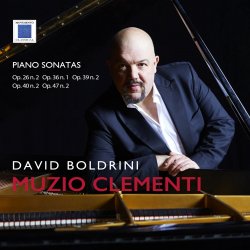
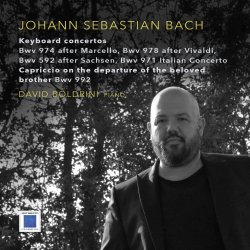
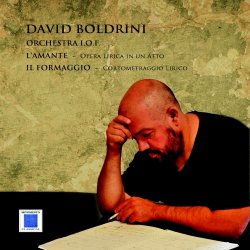
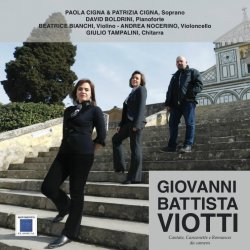
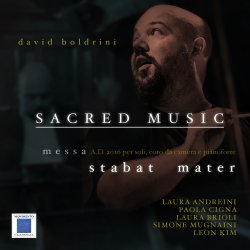
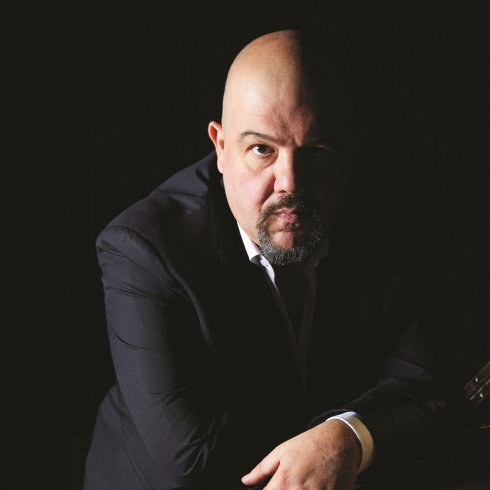
DAVID BOLDRINI
He graduated in piano at the Conservatory Cherubini in Florence in the class of Lidya Rocchetti with full marks, honors and honorable mention.
At the same time he graduated in organ and organ composition at the same conservatory studying in the class of M. Mochi .
He thus began to follow the master classes held by Bruno Canino at the Marziali Academy of Seveso and by the “Trio di Milano” at the music school of Fiesole. He also attended the two-year course held by the piano duo Moreno - Capelli , at the “la Musica Interna” in Bologna. He was an effective student of numerous master classes including those held by P. Badura Sckoda at Villa Medici in Milan, Bruno Canino at the “gli Amici della musica” in Florence and Fabio Bidini in Arezzo .
In 2001 he studied piano with Vincenzo Balzani at the Cantù music school, and then he attended the three-year course at the Imola piano academy " Incontri con il Maestro ", in the chamber music class of Pier Narciso Masi .
He also studied piano for four years at the Sesto Fiorentino music school with Pier Narciso Masi .
Winner of numerous competitions. In 2001 he was awarded the "LIONS" prize as the absolute winner of the “Città di Follonica” piano competition, in 2003 he was awarded as best chamber pianist at the “Luigi Nono competition” in Turin ( Venaria Reale ). In the same year he was first overall at the Rospigliosi competition and second overall at the International Valtidone competition in Piacenza .
In 2004 he was the absolute winner of the “Di Vicopisano” and “Nuovi Orizzonti” piano competitions in Arezzo.
Regularly invited as a soloist and as a chamber musician in prestigious associations, he performed for “L'associazione Fioravanti” of Prato, the “Lycaeum of Florence , the “i Concerti del Cicognini” of Prato, “Associazione musicale lucchese”, “Estate Frentana”, “Festival Barocco internazionale - Orchestra sinfonica” of Sanremo , “I concerti del museo casa Ivan Bruschi” of Arezzo, “Associazione giovani musicisti fiorentini Museo Chiesa di Dante Alighieri”, “Associazione Damaris” of Pistoia, “Teatro del lido” of Ostia, “Agimus Roma”, “Campus internazionale di musica” of Latina, Music Week in Brussels.
Chamber musician requested by internationally renowned artists, he collaborates alongside Maria Luigia Borsi, Andrea Bocelli, Paolo Chiavacci, Brad Repp, Augusto Vismara.
Since 2005 he has been the artistic director of the “Associazione Ramimusicali” of the homonymous concert season and of the competition which has reached its third edition this year.
